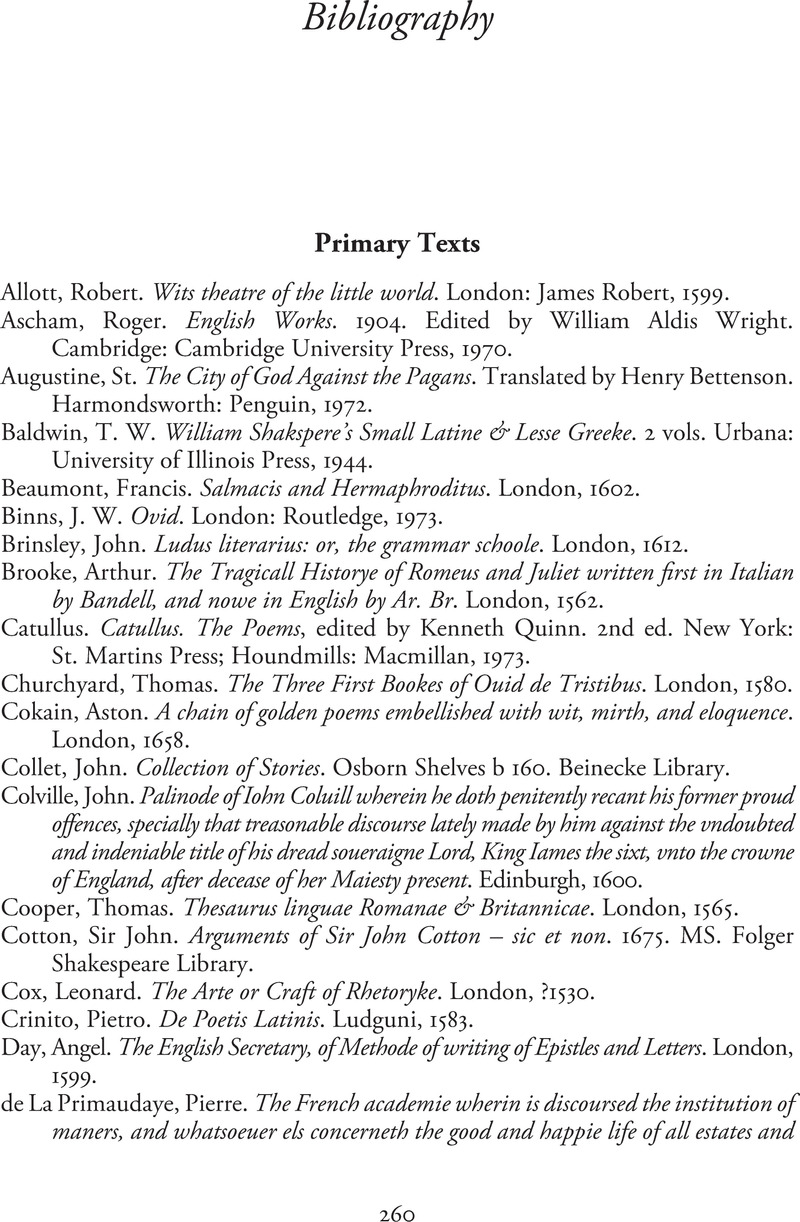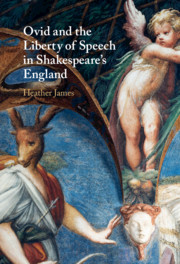Book contents
- Ovid and the Liberty of Speech in Shakespeare’s England
- Ovid and the Liberty of Speech in Shakespeare’s England
- Copyright page
- Contents
- Figures
- Acknowledgments
- Introduction Taking Liberties
- Chapter 1 Flower Power
- Chapter 2 Loving Ovid
- Chapter 3 Shakespeare’s Juliet
- Chapter 4 In Pursuit of Change
- Chapter 5 The Trial of Ovid
- Epilogue Ovid in the Hands of Women
- Bibliography
- Index
- References
Bibliography
Published online by Cambridge University Press: 18 June 2021
- Ovid and the Liberty of Speech in Shakespeare’s England
- Ovid and the Liberty of Speech in Shakespeare’s England
- Copyright page
- Contents
- Figures
- Acknowledgments
- Introduction Taking Liberties
- Chapter 1 Flower Power
- Chapter 2 Loving Ovid
- Chapter 3 Shakespeare’s Juliet
- Chapter 4 In Pursuit of Change
- Chapter 5 The Trial of Ovid
- Epilogue Ovid in the Hands of Women
- Bibliography
- Index
- References
Summary

- Type
- Chapter
- Information
- Ovid and the Liberty of Speech in Shakespeare's England , pp. 260 - 280Publisher: Cambridge University PressPrint publication year: 2021

